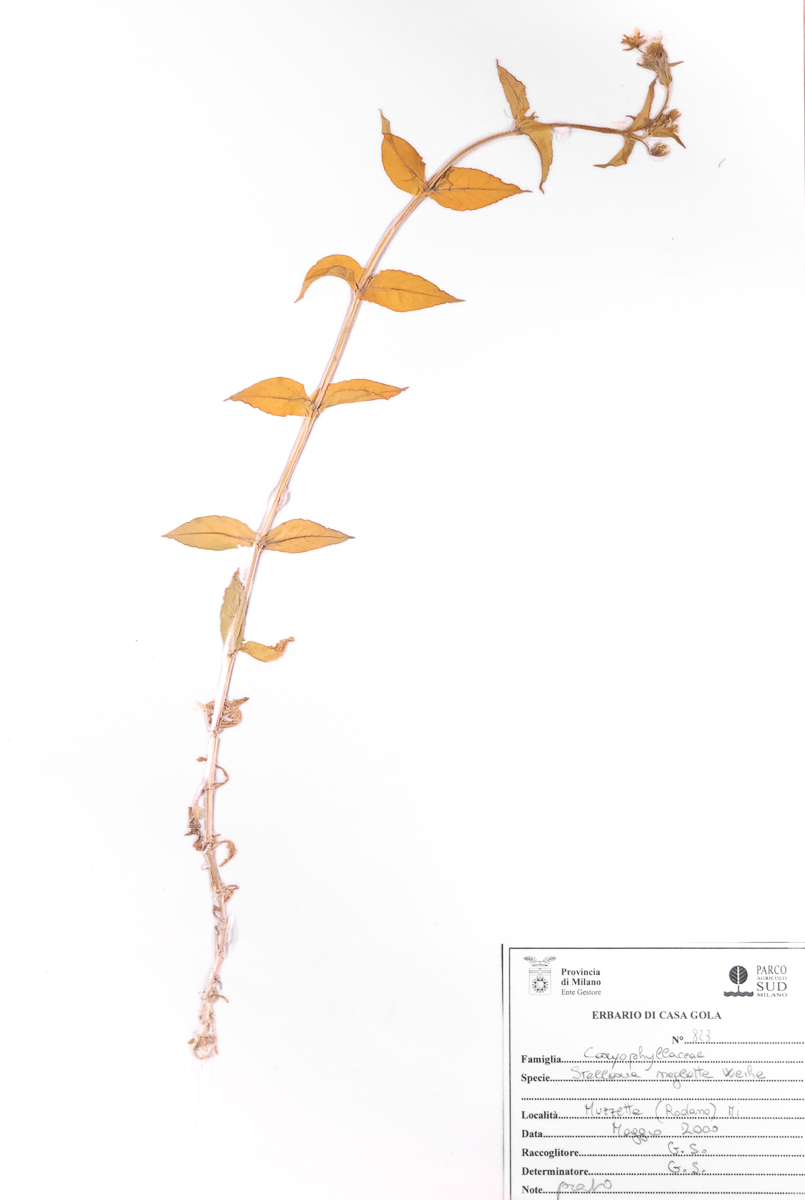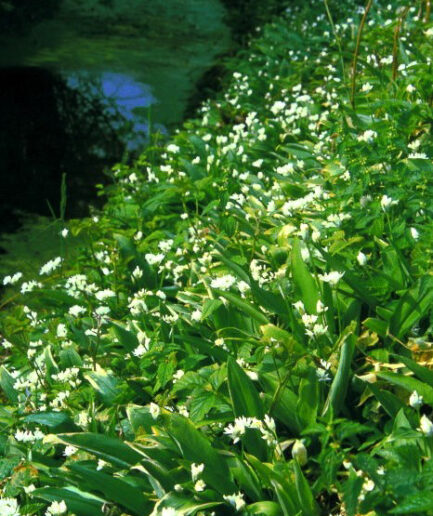Greater chickweed
Scientific Name: Stellaria neglecta Weihe
Family: Caryophyllaceae
MORPHOLOGY
Habit and Size: Annual herbaceous plant, 25-90 cm tall.
Stem: Quadrangular stems, weakly branched, initially prostrate then ascending, with a single line of hairs along each internode.
Leaves: Lower leaves ovate with a subcordate base and acute or shortly acuminate apex, long-petiolate with blades 1-2.5 cm and petioles twice the length of the blade. Upper leaves are usually sessile.
Flowers: Terminal inflorescence is a loose dichasium with ovate to lanceolate bracts. Flowers are 10 mm in diameter, on glabrous or pubescent pedicels, 25-40 cm long, initially reflexed then erect. The calyx has 5 sepals 3.5-6 mm long, and the corolla has 5 deeply bifid white petals with subequal contiguous lobes, as long or slightly longer than the sepals. Blooms from February to July.
Fruits and Seeds: The fruit is a valvate capsule, green or yellow, ovoid-oblong, protruding from the calyx. Seeds are 1.1-1.6 mm, brown, covered with minute, sharp, conical tubercles.
DISTRIBUTION AND HABITAT
Found throughout Italy except in the Aosta Valley, in bushes, forest edges, fallow lands, and roadsides, from sea level up to 800 m.
USE
Contains tannins, salts, saponins, and vitamins, giving it diuretic, laxative, diaphoretic, and expectorant properties. Also used externally as a soothing and refreshing remedy against eczema, itching, and ulcers. Before using any plant-based product (medicinal or non-medicinal) for therapeutic or similar purposes, it is always advisable to consult your doctor first. As a food, it is cooked with other edible herbs in soups, fillings, or side dishes (only young shoots and apical parts are recommended, and consumption should be moderate due to saponin content).
Photo: under free license from iNaturalist, Saxifraga, and Rutger Barendse





















